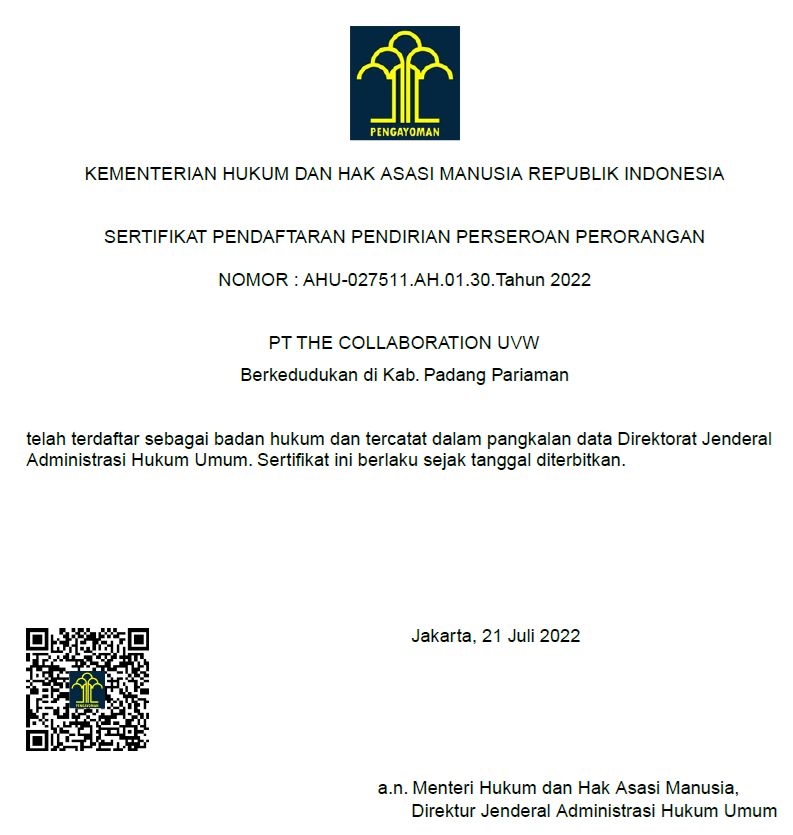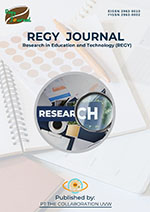The needs for teaching media development physical education sports health (PJOK) with an interactive e-book for primary school students
DOI:
https://doi.org/10.62590/regy.v2i2.108Keywords:
learning development, teaching media, e-books interactive, PJOK, Digital eraAbstract
This research aimed to determine the feasibility and the needs for developing digital-based teaching media in elementary schools, as an alternative teaching media in implementing physical education, sports, and health (PJOK) learning for Phase B students at SDN 13 Sitiung. This development was relevant to students’ learning needs in which students can utilize digital technology in the PJOK learning process. The presence of this interactive e-book is hoped to increase motivation and student learning outcomes and provide changes in the PJOK learning process which should be adapted to the learning needs of students and the digital era.
References
Abdullah, M. (2019). School culture to serve performance of madrasah in Indonesia. QIJIS (Qudus International Journal of Islamic Studies), 7(1), 71-100. https://doi.org/10.21043/qijis.v7i1.4809.
Abimanyu, M. A., Ismaya, E. A., & Setiawan, D. (2023). The role of parents based on their type of work: How to motivate children’s learning. Journal of Innovation and Research in Primary Education, 2(2), 37-44. https://doi.org/10.56916/jirpe.v2i2.544.
Abulhul, Z. (2021). Teaching strategies for enhancing student’s learning. Journal of Practical Studies in Education, 2(3), 1-4. https://doi.org/10.46809/jpse.v2i3.22.
Adamson, D., Dyke, G., Jang, H., & Rosé, C. P. (2014). Towards an agile approach to adapting dynamic collaboration support to student needs. International Journal of Artificial Intelligence in Education, 24(1), 92-124. https://doi.org/10.1007/s40593-013-0012-6.
Adha, M. M., Budimansyah, D., Kartadinata, S., & Sundawa, D. (2019). Emerging volunteerism for Indonesian millennial generation: Volunteer participation and responsibility. Journal of Human Behavior in the Social Environment, 29(4), 467-483. https://doi.org/10.1080/10911359.2018.1550459.
Ahmad, K. B. (2015). Educational practice: Lessons to be learned from madrasah and religious schools in contemporary Southeast Asia. Indonesian Journal of Islam and Muslim Societies, 5(1), 29-48.
Amanda, D. P., Alya, H. M., & Lubis, R. R. (2024). The role of parents in encouraging children’s learning motivation in elementary school. International Journal of Students Education, 1(2), 577-580. https://doi.org/10.62966/ijose.v1i2.545.
Arpan, M., & Sadikin, S. (2020). Media pembelajaran interaktif perangkat keras komputer. INVOTEK: Jurnal Inovasi Vokasional dan Teknologi, 20(2), 43-50. https://doi.org/10.24036/invotek.v20i2.741.
Arpan, M., Salaman, S., Budiman, R. D. A., Ambyar, A., & Wakhinuddin, W. (2020). Student learning outcomes using drill and practice type of computer assisted instruction. International Journal of Scientific & Technology Research, 9(04), 1433-1436.
Azzarito, L., Macdonald, D., Dagkas, S., & Fisette, J. (2017). Revitalizing the physical education social-justice agenda in the global era: Where do we go from here? Quest, 69(2), 205-219. https://doi.org/10.1080/00336297.2016.1176935.
Backfisch, I., Lachner, A., Stürmer, K., & Scheiter, K. (2021). Variability of teachers’ technology integration in the classroom: A matter of utility! Computers & Education, 166(June), 104159. https://doi.org/10.1016/j.compedu.2021.104159.
Batubara, Q. N. M. (2023). ICT-based needs analysis of learning arts and culture in middle school at Sunggal. Research in Education and Technology (REGY), 2(1), 38-41. https://doi.org/10.62590/regy.v2i1.96.
Beck, J. (2018). School Britannia? Rhetorical and educational uses of ‘British values’. London Review of Education, 16(2), 228-238.
Beddoes, Z., Prusak, K., & Hall, A, (2014) Overcoming marginalization of physical education in America’s schools. Journal of Physical Education Recreation and Dance, 85(4), 21-27.
Belland, B. R., Walker, A. E., Kim, N. J., & Lefler, M. (2017). Synthesizing results from empirical research on computer-based scaffolding in STEM education: A meta-analysis. Review of Educational Research, 87(2), 309-344. https://doi.org/10.3102/0034654316670999.
Berendt, B., Littlejohn, A., & Blakemore, M. (2020). AI in education: Learner choice and fundamental rights. Learning, Media and Technology, 45(3), 312-324. https://doi.org/10.1080/17439884.2020.1786399.
Beyene, W. M., Mekonnen, A. T., & Giannoumis, G. A. (2020). Inclusion, access, and accessibility of educational resources in higher education institutions: Exploring the Ethiopian context. International Journal of Inclusive Education, 27(1), 18-34. https://doi.org/10.1080/13603116.2020.1817580.
Boerma, I. E., Mol, S. E., & Jolles, J. (2018). Parents adjust the quality of their home literacy environment to the reading interest of their third to sixth graders. Parenting, 18(4), 243-261. https://doi.org/10.1080/15295192.2018.1524243.
Bollen, L., Gijlers, H., & van Joolingen, W. (2015). Drawings in computer-supported collaborative learning - empirical and technical results. Computing and Informatics, 34, 559-587.
Bruckermann, T., Aschermann, E., Bresges, A., & Schlüter, K. (2017). Metacognitive and multimedia support of experiments in inquiry learning for science teacher preparation. International Journal of Science Education, 39(6), 701-722. https://doi.org/10.1080/09500693.2017.1301691.
Budiman, R. D. A., Arpan, M., & Verawardina, U. (2018). Readiness assessment penerapan media pembelajaran pengenalan hardware jaringan komputer berbasis augmented reality. Jurnal Pendidikan Informatika dan Sains, 7(1), 118-125. http://dx.doi.org/10.31571/saintek.v7i1.776.
Budiman, R. D. A., Liwayanti, U., & Arpan, M. (2022). Analisis kebutuhan dan kesiapan penerapan media pembelajaran berbasis Android materi ilmu akidah. EDUMATIC: Jurnal Pendidikan Informatika, 6(1), 31-38. https://doi.org/10.29408/edumatic.v6i1.5087.
Chen, J., Wang, M., Kirschner, P. A., & Tsai, C.-C. (2018). The role of collaboration, computer use, learning environments, and supporting strategies in CSCL: A meta-analysis. Review of Educational Research, 88(6), 799-843. https://doi.org/10.3102/0034654318791584.
Chen, Y. C., Hand, B., & Norton-Meier, L. (2017). Teacher roles of questioning in early elementary science classrooms: A framework promoting student cognitive complexities in argumentation. Research in Science Education, 47(2), 373-405. https://doi.org/10.1007/s11165-015-9506-6.
Dewi, M. (2018). Need analysis pengembangan model pembelajaran berbasis proyek e commerce pada mata kuliah Kewirausahaan. Jurnal Pendidikan dan Teknologi Informasi, 5(1), 71-80.
Dierks, P. O., Höffler, T. N., & Parchmann, I. (2014). Profiling interest of students in science: Learning in school and beyond. Research in Science & Technological Education, 32(2), 97-114. https://doi.org/10.1080/02635143.2014.895712.
Dwivedi, A., & Lewis, C. (2020). How millennials’ life concerns shape social media behaviour. Behaviour & Information Technology, 40(14), 1467-1484. https://doi.org/10.1080/0144929X.2020.1760938.
Emiliya, E., Erikson, S., Arianto, D. P., Florida, R., & Almahdi, A. (2023). Application of jigsaw type cooperative learning to student learning outcomes in class IX SMP Negeri 2 Ngabang. Research in Education and Technology (REGY), 2(1), 16-20. https://doi.org/10.62590/regy.v2i1.98.
Farrow, C. B., & Reyes, M. D. (2022). Land-grant university strategic plans: Are university-level service-learning goals aligned with construction programs’ goals? International Journal of Construction Education and Research, 18(4), 333-351. https://doi.org/10.1080/15578771.2022.2027052.
Feladi, V., Arpan, M., & Verawardina, U. (2017). Pelatihan pembuatan media pembelajaran berbasis animasi di SMP Negeri 2 Siantan Kabupaten Mempawah. Gervasi: Jurnal Pengabdian kepada Masyarakat, 1(1), 32-42. https://doi.org/10.31571/gervasi.v1i1.597.
Feladi, V., Lusia, A., Henita, H., Losta, I., & Dulhadi, D. (2023). Komparasi model pembelajaran kooperatif tipe examples non examples dan picture and picture terhadap hasil belajar siswa. Research in Education and Technology (REGY), 1(2), 118-124. https://doi.org/10.62590/regy.v1i2.79.
Ferdian, F., Zahari, M. S. M., Hanafiah, M. H., & Patah, M. O. R. A. (2022). Hotel workplace environment, millennial culture and graduates career commitment: An empirical investigation. Journal of Quality Assurance in Hospitality & Tourism, 25(2), 294-312. https://doi.org/10.1080/1528008x.2022.2112806.
Ginevra, M. C., Di Maggio, I., Santilli, S., & Nota, L. (2021). The role of career adaptability and future orientation on future goals in refugees. British Journal of Guidance & Counselling, 49(2), 272-286. https://doi.org/10.1080/03069885.2020.1865874.
Halawa, S., Hsu, Y. S., Zhang, W. X., Kuo, Y. R., & Wu, J. Y. (2020). Features and trends of teaching strategies for scientific practices from a review of 2008-2017 articles. International Journal of Science Education, 42(7), 1183-1206. https://doi.org/10.1080/09500693.2020.1752415.
Hernando, F., Basri, I. Y., Alwi, E., & Purwanto, W. (2022). Pembuatan video pembelajaran praktikum pada mata pelajaran listrik elektronika. Research in Education and Technology (REGY), 1(1), 68-75. https://doi.org/10.62590/regy.v1i1.73.
Hodson, D. (2014). Learning science, learning about science, doing science: Different goals demand different learning methods. International Journal of Science Education, 36(15), 2534-2553. https://doi.org/10.1080/09500693.2014.899722.
Hwang, G.-J., Xie, H., Wah, B. W., & Gasevic, D. (2020). Vision, challenges, roles and research issues of artificial intelligence in education. Computers and Education: Artificial Intelligence, 1(2020), 100001.
Jusuf, D. I. (2023). Digital technology and changes in consumer behavior: Case study of the millennial generation. Jurnal Ekonomi, 12(04), 1338-1343.
Kearney, M., Schuck, S., Aubusson, P., & Burke, P. F. (2018). Teachers’ technology adoption and practices: Lessons learned from the IWB phenomenon. Teacher Development, 22(4), 481-496. https://doi.org/10.1080/13664530.2017.1363083.
Kilborn, M., Lorusso, J., & Francis, N. (2016). An analysis of Canadian physical education curricula. European Physical Education Review, 22(1), 23-46. https://doi.org/10.1177/1356336X15586909.
Kong, S. H. (2020). A study of students’ perceptions of parental influence on students’ musical instrument learning in Beijing, China. Music Education Research, 23(3), 287-299. https://doi.org/10.1080/14613808.2020.1832978.
Lee, S., Lee, W. J., & Yoo, K. H. (2019). Millennial ride-share passengers’ pro-sustainable behaviors: norm activation perspective. Asia Pacific Journal of Tourism Research, 25(1), 15-26. https://doi.org/10.1080/10941665.2019.1578811.
Levenberg, A. (2023). Lecturer responsiveness in online learning – availability, accessibility, and flexibility: a matter of kindness. Journal of Further and Higher Education, 47(6), 740-753. https://doi.org/10.1080/0309877X.2023.2226073.
Lewis, S., Heath, G., Lim, L., & Roberts, R. (2021). I’m not a number, I’m someone to them: Supporting commencing university students’ through technology-mediated personalised communication. Student Success, 12(1), 24-34.
Lin, F., Zhu, G., & Chan, C. K. K. (2023). Do epistemically more sophisticated students always learn better than epistemically less sophisticated students in a constructivist learning context? Educational Psychology, 43(6), 583-603. https://doi.org/10.1080/01443410.2023.2241685.
Linder, K. E., Fontaine-Rainen, D. L., & Behling, K. (2015). Whose job is it? Key challenges and future directions for online accessibility in US institutions of higher education. Open Learning: The Journal of Open, Distance and e-Learning, 30(1), 21-34. https://doi.org/10.1080/02680513.2015.1007859.
Liu, Z., Kong, X., Liu, S., & Yang, Z. (2023). Effects of computer-based mind mapping on students’ reflection, cognitive presence, and learning outcomes in an online course. Distance Education, 44(3), 544-562. https://doi.org/10.1080/01587919.2023.2226615.
Lomellini, A., Lowenthal, P. R., Snelson, C., & Trespalacios, J. H. (2022). Higher education leaders’ perspectives of accessible and inclusive online learning. Distance Education, 43(4), 574-595. https://doi.org/10.1080/01587919.2022.2141608.
Lynch, T. (2014) Australian curriculum reform II: Health and physical education. European Physical Education Review, 20(4), 508-524.
Maarif, M. A., Wardi, M., & Amartika, S. (2020). The implementation strategy of religious culture in madrasah. Tarbawi: Jurnal Keilmuan Manajemen Pendidikan, 6(02), 163-174. https://doi.org/10.32678/tarbawi.v6i02.2962.
Maier, T., Tavanti, M., Bombard, P., Gentile, M., & Bradford, B. (2015). Millennial generation perceptions of value-centered leadership principles. Journal of Human Resources in Hospitality & Tourism, 14(4), 382-397. https://doi.org/10.1080/15332845.2015.1008386.
Mäkinen, M., Linden, J., Annala, J., & Wiseman, A. (2018). Millennial generation preservice teachers inspiring the design of teacher education. European Journal of Teacher Education, 41(3), 343-359. https://doi.org/10.1080/02619768.2018.1448776.
McCartney, M., Gonzalez, R., Colon, J., Moralejo, L., Ritchie, T., Opris, H. B, Castellano, R., Hernandez, D., & Freyre, P. (2024). What is a biology degree without a career goal or a strategy to reach that goal? An analysis of career goals of graduating Biology Majors. Journal of College Science Teaching, 53(2024), 1-9. https://doi.org/10.1080/0047231X.2024.2398389.
Moulin-Stożek, D. (2020). Spiritual development as an educational goal. ECNU Review of Education, 3(3), 504-518. https://doi.org/10.1177/2096531120935128
Munsch, A. (2021). Millennial and generation Z digital marketing communication and advertising effectiveness: A qualitative exploration. Journal of Global Scholars of Marketing Science, 31(1), 10-29. https://doi.org/10.1080/21639159.2020.1808812.
Nasution, A., Ambiyar, Refdinal, Arpan, M., & Putri, E. (2024). POGIL learning model—metaphorming for mobile-based cryptography creation. International Journal of Interactive Mobile Technologies (iJIM), 18(11), 146-159. https://doi.org/10.3991/ijim.v18i11.49057.
Ndzinisa, N., & Dlamini, R. (2022). Responsiveness vs. accessibility: pandemic-driven shift to remote teaching and online learning. Higher Education Research & Development, 41(7), 2262-2277. https://doi.org/10.1080/07294360.2021.2019199.
Norman, M., Norman, A., & Hyland, T. (2022). The magic ingredient: Masters students’ interest in their dissertation topics. Research in Post-Compulsory Education, 27(4), 549-569. https://doi.org/10.1080/13596748.2022.2110773.
Petrie, K., Devcich, J., & Fitzgerald, H. (2018). Working towards inclusive physical education in a primary school: ‘some days I just don’t get it right’. Physical Education and Sport Pedagogy, 23(4), 345-357. https://doi.org/10.1080/17408989.2018.1441391.
Pramesworo, I. S., Sembiring, D., Sarip, M., Lolang, E., & Fathurrochman, I. (2023). Identification of new approaches to information technology-based teaching for successful teaching of millennial generation entering 21st century education. Jurnal Iqra’: Kajian Ilmu Pendidikan, 8(1), 350-370. https://doi.org/10.25217/ji.v8i1.2722.
Puspita, H. D. (2021). The role of parents in educating children during online classes. ETUDE: Journal of Educational Research, 1(2), 69-75. https://doi.org/10.56724/etude.v1i2.27.
Putri, M., Rahmiati, R., Dewi, M., & Irfan, D. (2022). Praktikalitas penggunaan e-modul dalam pembelajaran nail art. JRTI (Jurnal Riset Tindakan Indonesia), 7(1), 60-62. https://doi.org/10.29210/30031508000.
Puttileihalat, S., Kempa, R., & Rahabav, P. (2022). Online learning management to improve student’s cognitive ability (case study at SMA Negeri 3 Seram West). International Journal of Education, Information Technology, and Others, 5(4), 245-255. https://doi.org/10.5281/zenodo.7080371.
Radkowitsch, A., Vogel, F., & Fischer, F. (2020). Good for learning, bad for motivation? A meta-analysis on the effects of computer-supported collaboration scripts. International Journal of Computer-Supported Collaborative Learning, 15(2020), 5-47. https://doi.org/10.1007/s11412-020-09316-4.
Rahayu, F. E. S., & Asanti, C. (2021). Emotional geographies of teaching online classes during covid-19 pandemic: A case study of Indonesian first-grade elementary school teachers. Education, 51(5), 793-805. https://doi.org/10.1080/03004279.2021.2014925.
Rasmitadila, R., Rachmadtullah, R., Samsudin, A., Nurtanto, M., & Jauhari, M. N. (2023). Limited face-to-face learning on students in inclusive classrooms during the covid-19 pandemic: Perceptions of elementary school teachers in Indonesia. Cogent Education, 10(1), 1-20. https://doi.org/10.1080/2331186X.2023.2213612.
Rets, I., Coughlan, T., Stickler, U., & Astruc, L. (2020). Accessibility of open educational resources: How well are they suited for English learners? Open Learning: The Journal of Open, Distance and e-Learning, 38(1), 38-57. https://doi.org/10.1080/02680513.2020.1769585.
Saadatdoost, R., Sim, A. T. H., Jafarkarimi, H., & Mei Hee, J. (2015). Exploring MOOC from education and information systems perspectives: A short literature review. Educational Review, 67(4), 505-518. https://doi.org/10.1080/00131911.2015.1058748.
Sailer, M., Murböck, J., & Fischer, F. (2021). Digital learning in schools: What does it take beyond digital technology? Teaching and Teacher Education, 103(July), 103346. https://doi.org/10.1016/j.tate.2021.103346.
Sholihah, K., Anbiya, B. F., & Qonita, D. U. (2023). Online learning: Tantangan dan peluang pasca pandemi covid-19. Research in Education and Technology (REGY), 1(2), 111-117. https://doi.org/10.62590/regy.v1i2.84.
Sii, P., Verawardina, U., Arpan, M., & Sulistiyarini, D. (2017). Penerapan model pembelajaran inkuiri pada mata pelajaran KKPI terhadap kemampuan psikomotorik siswa. Jurnal Pendidikan Informatika dan Sains, 6(2), 166-176. http://dx.doi.org/10.31571/saintek.v6i2.642.
Singh, P. (2018). The millennial generation of Sikhs in North America. Sikh Formations, 14(3–4), 260-279. https://doi.org/10.1080/17448727.2018.1485376.
Sousa, M. J., & Rocha, Á. (2019). Digital learning: Developing skills for the digital transformation of organizations. Future Generation Computer Systems, 91(February), 327-334. https://doi.org/10.1016/j.future.2018.08.048.
Starks, A. (2022). Serving students with disabilities in K-12 online learning: Daily practices of special educators during the covid-19 pandemic. Distance Education, 43(4), 596-620. https://doi.org/10.1080/01587919.2022.2144138.
Sulistiyarini, D., Bibi, S., Fatmawati, E., & Arpan, M. (2018). Pelatihan pembuatan media pembelajaran interaktif di SMP dan SMK Mandiri Pontianak. Gervasi: Jurnal Pengabdian kepada Masyarakat, 2(1), 39-46. https://doi.org/10.31571/gervasi.v2i1.811.
Sun, R., Peng, S., & Pandey, S. K. (2014). Testing the effect of person-environment fit on employee perceptions of organizational goal ambiguity. Public Performance & Management Review, 37(3), 465-495. https://doi.org/10.2753/PMR1530-9576370306.
Supardi, S., Putra, R. K., Iqbal, M., & Toni, K. (2023). Development of mobile AR applications as a science learning media in increasing junior high school students’ interest in learning. Research in Education and Technology (REGY), 2(1), 1-5. https://doi.org/10.62590/regy.v2i1.93.
Suryandoko, W. (2023). Development of a project based online learning model to improve the skills and abilities of actors for students. PEDAGOGIK: Jurnal Pendidikan, 10(1), 101-116. https://doi.org/10.33650/pjp.v10i1.5522.
Suryani, S. (2023). The role of the family in online learning on students’ motivation, interest and learning achievement. Randwick International of Education and Linguistics Science Journal, 4(3), 712-726. https://doi.org/10.47175/rielsj.v4i3.801.
Swirski, H., Baram-Tsabari, A., & Yarden, A. (2018). Does interest have an expiration date? An analysis of students’ questions as resources for context-based learning. International Journal of Science Education, 40(10), 1136-1153. https://doi.org/10.1080/09500693.2018.1470348.
Syaifullah, L., Ambiyar, A., Zaus, M. A., & Arpan, M. (2024). Efektivitas pendekatan blended learning berbantuan e-learning terhadap hasil belajar mahasiswa. Juwara Jurnal Wawasan dan Aksara, 4(1), 1-12. https://doi.org/10.58740/juwara.v4i1.73.
Thomas, V., Muls, J., De Backer, F., & Lombaerts, K. (2019). Exploring self-regulated learning during middle school: Views of parents and students on parents’ educational support at home. Journal of Family Studies, 27(2), 261-279. https://doi.org/10.1080/13229400.2018.1562359.
Wang, L., Lee, H., & Ju, D. Y. (2018). Impact of digital content on young children’s reading interest and concentration for books. Behaviour & Information Technology, 38(1), 1-8. https://doi.org/10.1080/0144929X.2018.1502807.
Welch, R., Alfrey, L., & Harris, A. (2020). Creativity in Australian health and physical education curriculum and pedagogy. Sport, Education and Society, 26(5), 471-485. https://doi.org/10.1080/13573322.2020.1763943.
Widiana, I. W., Triyono, S., Sudirtha, I. G., Adijaya, M. A., & Wulandari, I. G. A. A. M. (2023). Bloom’s revised taxonomy-oriented learning activity to improve reading interest and creative thinking skills. Cogent Education, 10(2), 2221482. https://doi.org/10.1080/2331186X.2023.2221482.
Yang, D. C., & Sianturi, I. A. J. (2020). Analysis of algebraic problems intended for elementary graders in Finland, Indonesia, Malaysia, Singapore, and Taiwan. Educational Studies, 48(1), 75-97.
Yang, W. T., Lin, Y. R., She, H. C., & Huang, K. Y. (2015). The effects of prior-knowledge and online learning approaches on students’ inquiry and argumentation abilities. International Journal of Science Education, 37(10), 1564-1589. https://doi.org/10.1080/09500693.2015.1045957.
Zhao, W., Song, Y., Zhao, Q., & Zhang, R. (2018). The effect of teacher support on primary school students’ reading engagement: The mediating role of reading interest and Chinese academic self-concept. Educational Psychology, 39(2), 236-253. https://doi.org/10.1080/01443410.2018.1497146.
Downloads
Published
How to Cite
Issue
Section
License
Copyright (c) 2024 Andri Kusriani, Muharika Dewi

This work is licensed under a Creative Commons Attribution-ShareAlike 4.0 International License.

















